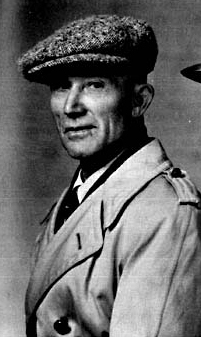 Grandpa Angus Henson after WWII
Grandpa Angus Henson after WWII As welcome as these circumstances are, it would not be suitable to choose any of these wonderful living folks as my “target" for this week’s post. And surprisingly it has been hard to find an appropriate deceased candidate in my mother’s extensive family tree. I have a lot of far-flung individuals who would fit the bill, including a 10th cousin who shares my birthday, but I don’t know much about them yet, and certainly no riveting stories! And although my mother was born just 13 days before me, I knew that there had to be someone even closer. I found him in my father’s tree.
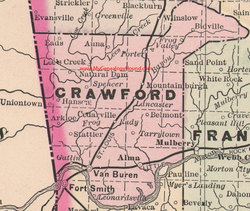 1889 map of Crawford County, Arkansas
1889 map of Crawford County, Arkansas Unfortunately I know nothing of Angus's early childhood. His father John was a farmer from Washington County Arkansas just north of Crawford County, and his mother was also a native of Arkansas; they were married in Crawford County where all but their youngest child was born. Early records are scarce, as birth records for Crawford County don't start until 1914, and the 1890 census records for both Arkansas and Oklahoma have not survived.
In 1900 Angus was 13 and living with his parents and family in Oklahoma Territory. The Henson family had a history of moving westward towards the frontier. As Crawford county lies on Arkansas’s western border with Oklahoma, it is not surprising that, sometime between 1896 and 1900, they decided to hop across the border to Davis Township near Shawnee in central Oklahoma (just east of Oklahoma City) .
Ten years later in 1910, Angus was living alone on his own farm in Logan in northwest Oklahoma. By August of that same year he had married Bessie Mae HUNT in nearby Elmwood Township, Beaver County, Oklahoma. As Bessie was born in Missouri, and lived in Texas in 1900 before moving to Elmwood Oklahoma before 1910, neither one was a native of the area.
Their roots in the area were not deep, yet they started raising their first two children there. But the call of free land to the north beckoned, and about 1913 the young family decided to move up to northern Alberta Canada, following Bessie's parents who had started homesteading south of Boyle. They first settled in either Flat Creek or Plum Creek (sources vary) where their 3rd child was born in 1914, but then moved closer to his in-laws.
According to his certificate of naturalization, Angus became a naturalized citizen of Canada on 18 Jun 1917. And according to family stories, it was in that same year that he "bought" property in Boyle, although he didn't receive title until 1919. The Western Land Grants indexes on the Library and Archives Canada site do not contain dates, but they do list a land grant for Henry A Henson in NE Section 28, township 64, range 19, west of 4th meridian. His father-in-law Joseph Alexander Hunt was granted land nearby in Section 20, Township 64, range 20, meridian 4. I do not have the full files on either grant, but know the process took time, from getting permission to homestead on a particular parcel of land through the proving of necessary improvements before they could receive a "land patent" or title from the crown.
"Daddy’s early years in Canada saw much hardship, as did most pioneers, but his seemed beset with loss. Our home and everything in it was destroyed by fire which caught from the stove pipe. Then a new log barn, which had not quite been finished, and had been temporarily thatched with straw, was caught by a spark from a spring brush fire and destroyed. Next came the loss of most of his cattle. Those days it was open range but the railway was about a mile west of us and the right-of-way was not fenced. The grazing was better there that day than in the dense bush and they were on the track when the train came around the bend. Daddy got no compensation from the railroad either. |
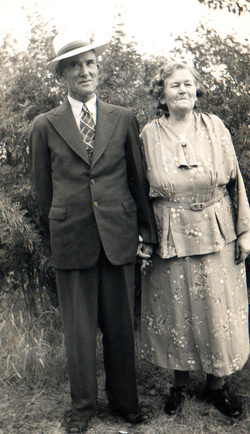 Henry Angus and Bessie Mae (Hunt) Henson, holding hands
Henry Angus and Bessie Mae (Hunt) Henson, holding hands Hardship continued, due in general to the poor economy following the market crash of 1929 and the desolation of the "dirty 30s". Mildred mentions in her story that in 1934, Angus helped dig a 60 foot well in the center of Boyle that was to provide the village's main water supply for the next 30 years. He was apparently a proud man who wanted to do what he was able to be as useful as possible.
As each of 7 children grew old enough they went off to work, some as far away as Yellowknife NWT, Ontario or BC. Then during WWII his two younger sons enlisted. The family had disbursed
I do not know what became of the homestead, or how long Angus and Bessie continued to live there. But both Angus and Bessie lived in northern Alberta for the rest of their lives.
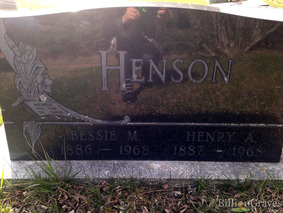 Grave of Angus and Bessie Henson, Boyle Alberta, 1968
Grave of Angus and Bessie Henson, Boyle Alberta, 1968 They arrived at our little house on Coronation Street in Duncan BC, and to a child of seven they seemed very elderly. I remember Angus carefully supporting Bessie’s elbow as they slowly made their way down our short front walk. Bessie was already quite affected by dementia and had trouble walking. I don’t remind her talking at all. Angus seemed to be a calm and quiet man, although the nature of the visit may have caused him to be more reserved than he would normally have been. At some point (and in private) Mom explained to my sister and me that he had lost one hand and that was why he tended to keep that arm hidden. Unfortunately I don’t remember what the adults talked about, or what Grandpa Henson said when he bent down to say hello to us two girls (or perhaps I just imagined that part of this event). But although the meeting was brief, it left a lasting impression.
Angus died peacefully in 1968, 2 months after Bessie, while living in a care home in Athabasca Alberta, some 30 or 40 km northwest of Boyle. The are both buried in the Boyle Municipal Cemetery.
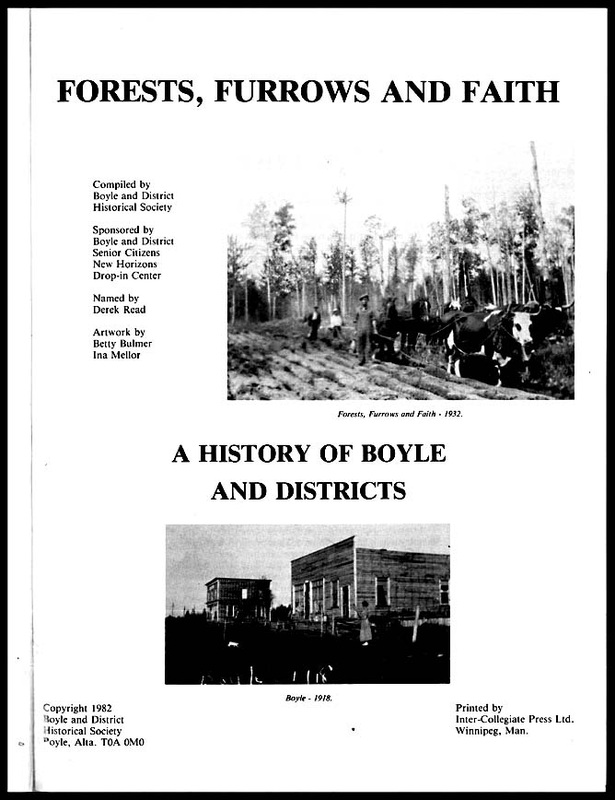
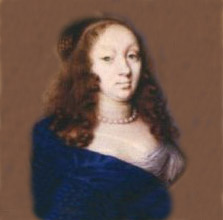
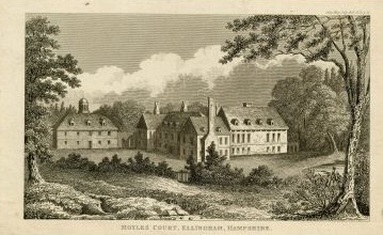
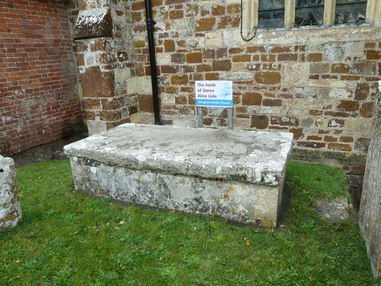
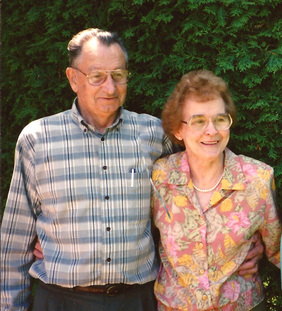
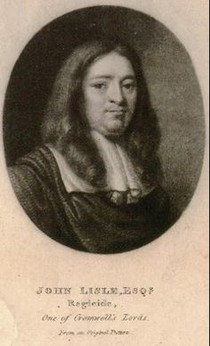
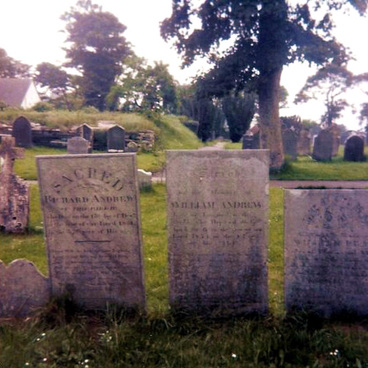
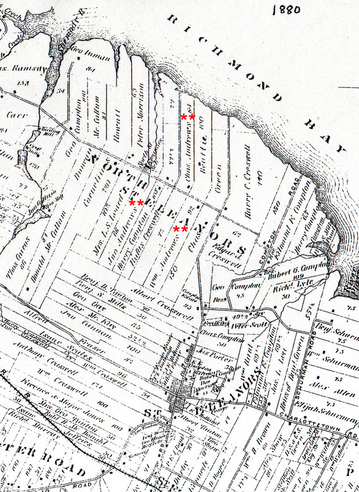
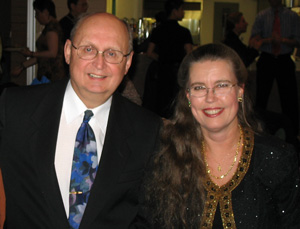
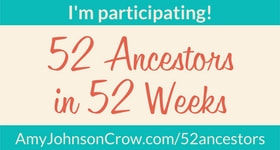
 RSS Feed
RSS Feed
